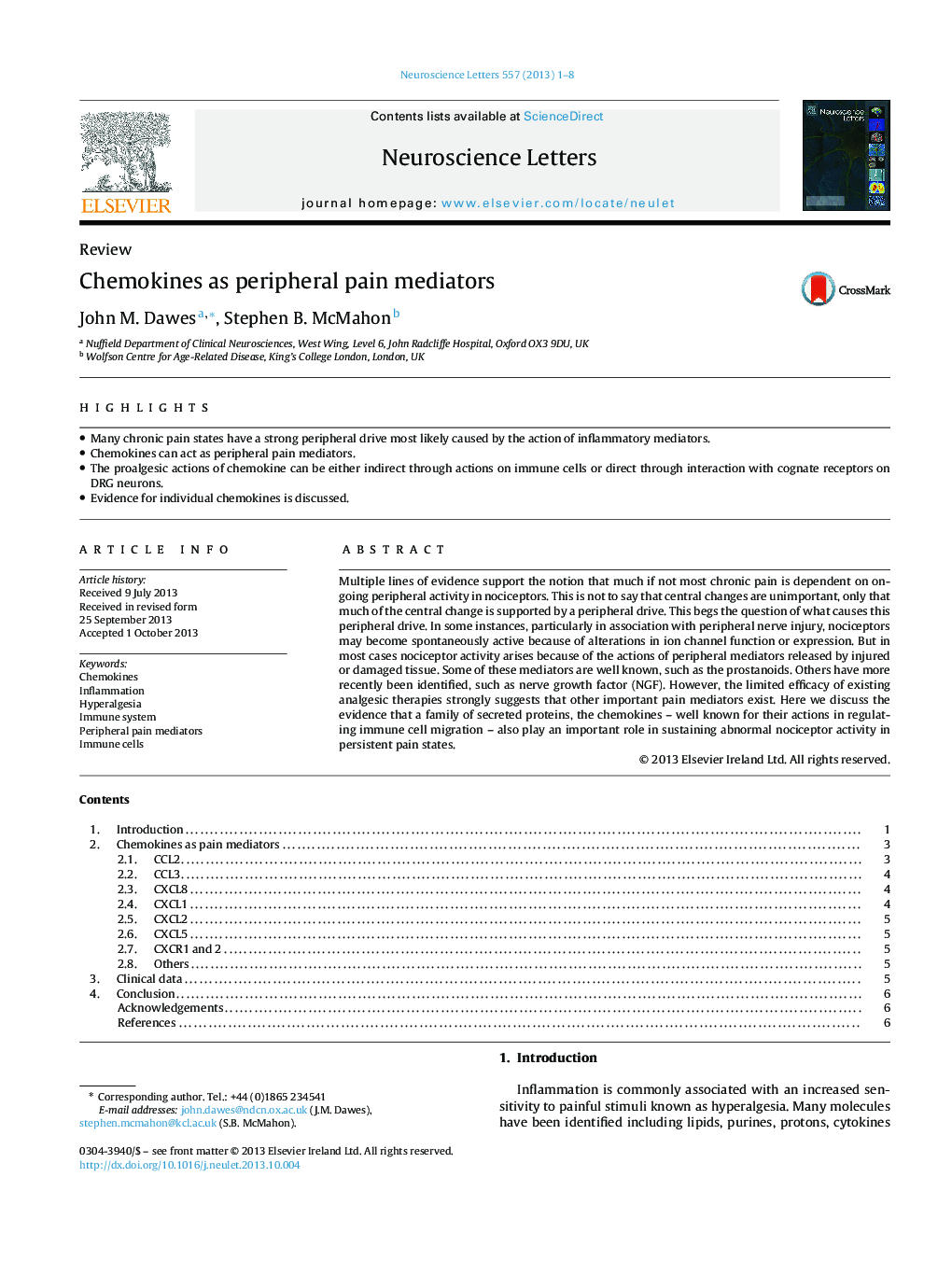| Article ID | Journal | Published Year | Pages | File Type |
|---|---|---|---|---|
| 4343881 | Neuroscience Letters | 2013 | 8 Pages |
•Many chronic pain states have a strong peripheral drive most likely caused by the action of inflammatory mediators.•Chemokines can act as peripheral pain mediators.•The proalgesic actions of chemokine can be either indirect through actions on immune cells or direct through interaction with cognate receptors on DRG neurons.•Evidence for individual chemokines is discussed.
Multiple lines of evidence support the notion that much if not most chronic pain is dependent on on-going peripheral activity in nociceptors. This is not to say that central changes are unimportant, only that much of the central change is supported by a peripheral drive. This begs the question of what causes this peripheral drive. In some instances, particularly in association with peripheral nerve injury, nociceptors may become spontaneously active because of alterations in ion channel function or expression. But in most cases nociceptor activity arises because of the actions of peripheral mediators released by injured or damaged tissue. Some of these mediators are well known, such as the prostanoids. Others have more recently been identified, such as nerve growth factor (NGF). However, the limited efficacy of existing analgesic therapies strongly suggests that other important pain mediators exist. Here we discuss the evidence that a family of secreted proteins, the chemokines – well known for their actions in regulating immune cell migration – also play an important role in sustaining abnormal nociceptor activity in persistent pain states.
